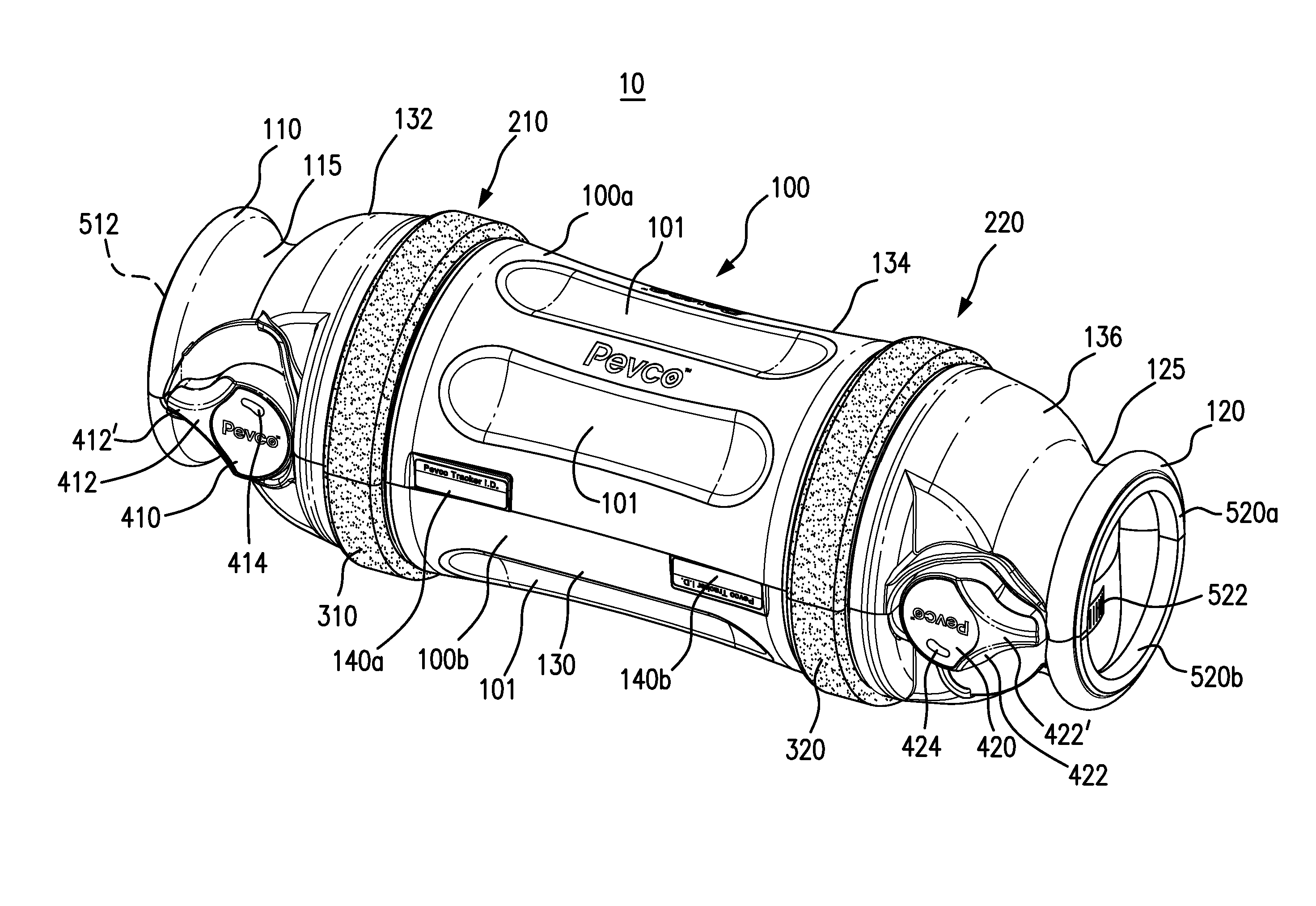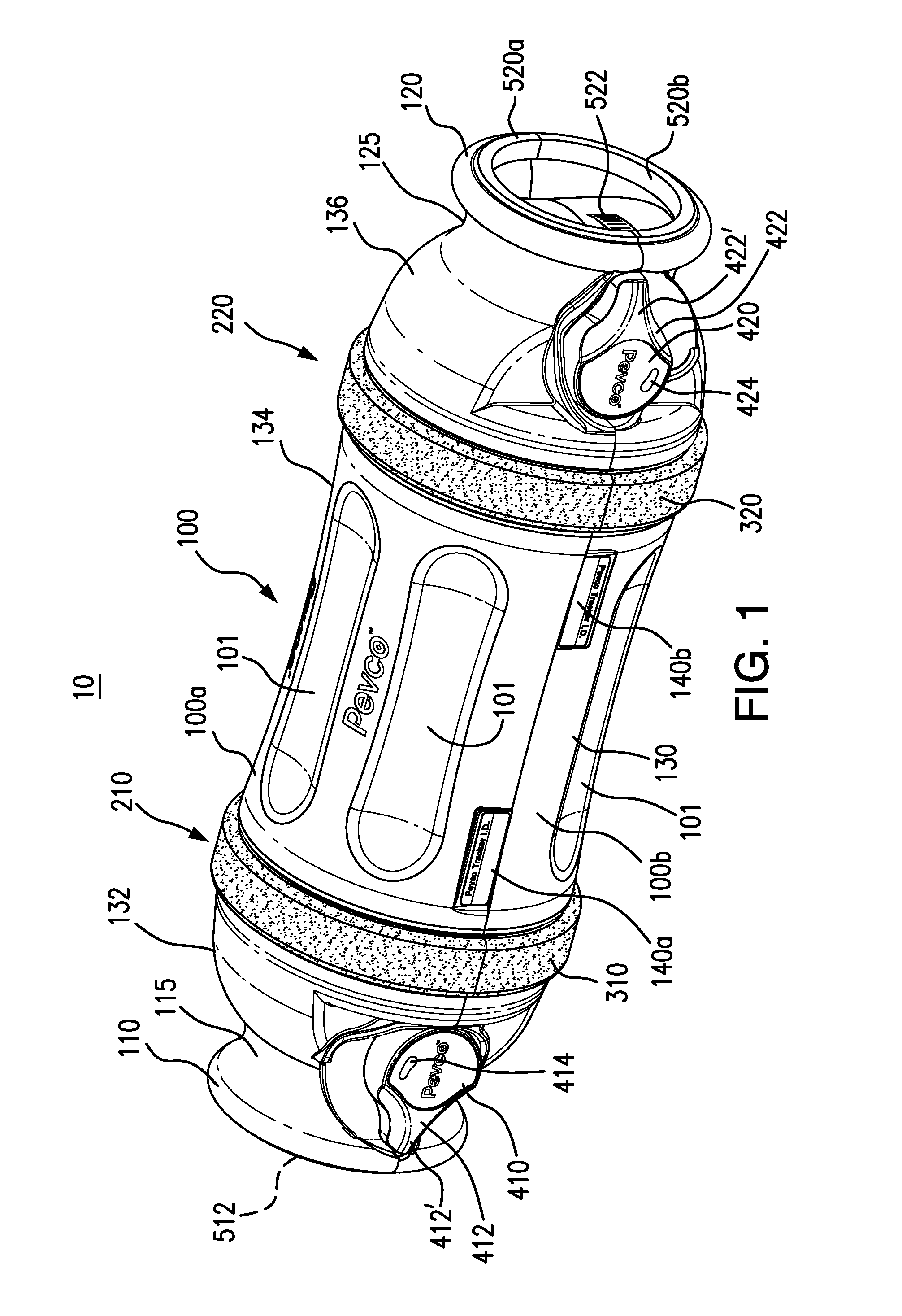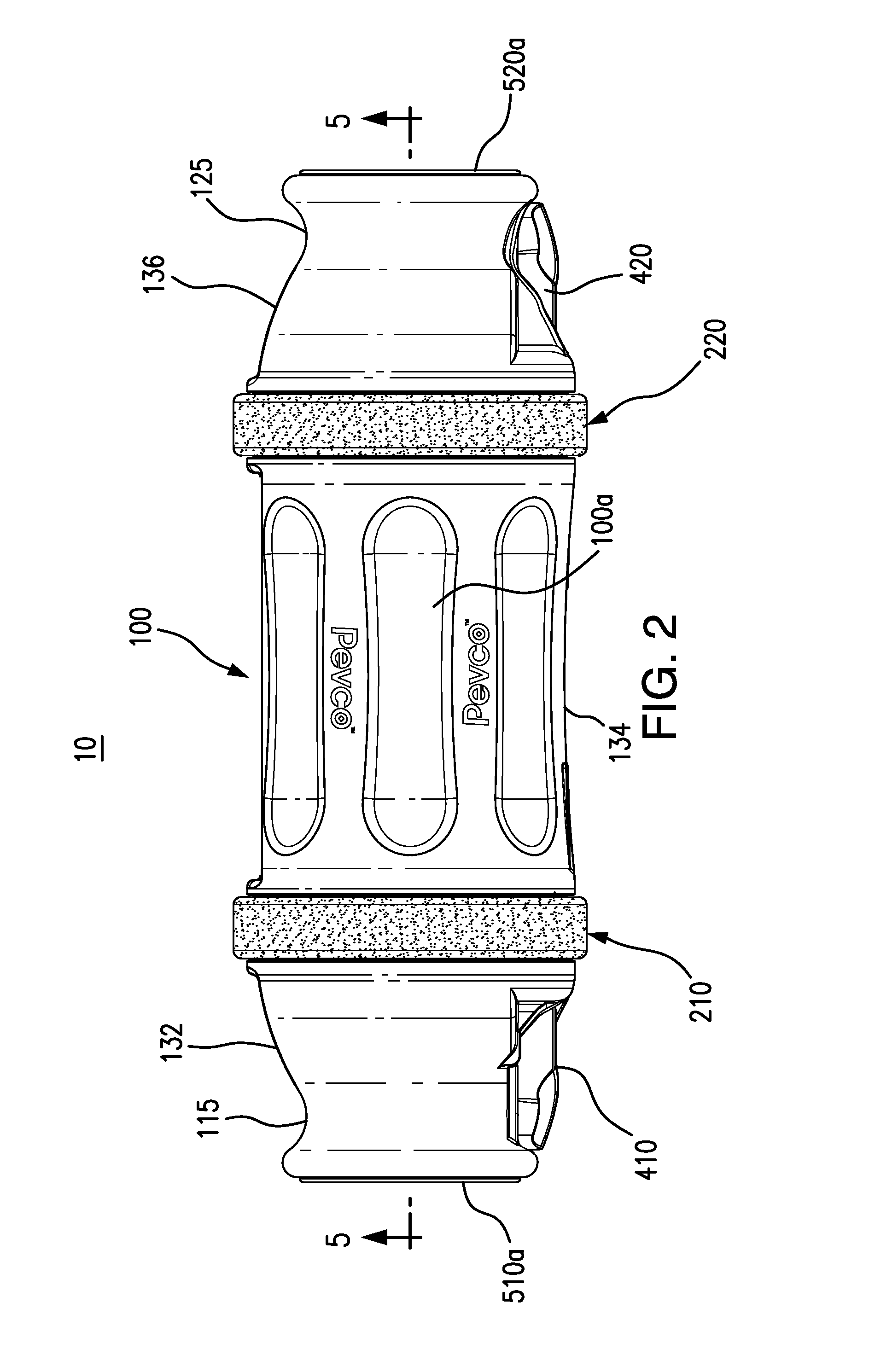Carrier apparatus for pneumatic tube delivery system
- Summary
- Abstract
- Description
- Claims
- Application Information
AI Technical Summary
Benefits of technology
Problems solved by technology
Method used
Image
Examples
Embodiment Construction
[0038]Referring now to FIGS. 1-8, there are shown various views of a carrier apparatus 10 formed in accordance with an exemplary embodiment of the present invention. In FIGS. 1-8, carrier apparatus 10 is shown in its closed and fully latched configuration, ready for transport through a pneumatic tube delivery system (not shown).
[0039]Carrier apparatus 10 is formed with a housing 100 whose capsule-like structure encloses an internal carrying compartment for various payloads. Housing 100 may be formed of any suitable material known in the art. Because carrier apparatus 10 serves as a transport capsule propelled at high speeds through an extensive network of chutes / tubular conduits, however, housing 100 is formed of a material having the strength, rigidity, density, hardness, and other such material properties sufficient to withstand the structural / inertial punishment encountered during use and protect the payload against the same. In the illustrated embodiment, for example, housing 10...
PUM
 Login to View More
Login to View More Abstract
Description
Claims
Application Information
 Login to View More
Login to View More - R&D
- Intellectual Property
- Life Sciences
- Materials
- Tech Scout
- Unparalleled Data Quality
- Higher Quality Content
- 60% Fewer Hallucinations
Browse by: Latest US Patents, China's latest patents, Technical Efficacy Thesaurus, Application Domain, Technology Topic, Popular Technical Reports.
© 2025 PatSnap. All rights reserved.Legal|Privacy policy|Modern Slavery Act Transparency Statement|Sitemap|About US| Contact US: help@patsnap.com



